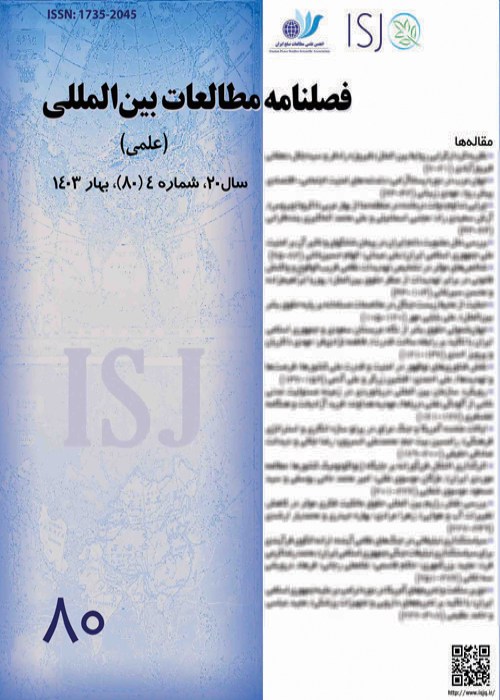The 2018 Danish “Burqa Ban”: Joining a European Trend and Sending a National Message
Author(s):
Article Type:
Research/Original Article (ترویجی)
Abstract:
In May of 2018, the strategy of law-making was utilized in the Kingdom of Denmark to respond to or, more to the point, respond against full-face garments along the lines of a democratic and secular society in which values like transparency inform and guide interaction, dialogue, and communication. The new legal norm and measure, law L 219, does not refer expressly to the veil, nor to women, or to Islam. Nevertheless, the national Parliament in the Kingdom of Denmark proceeded on the basis of premises that reveal, upon scrutiny, why the particular provision that prohibits full-face veils is widely known and referred to as the “burqa ban”.Like the niqab, the burqa is a full-face veil. Numerically speaking, between 50 and 200 Muslim women wear such a veil, a fact that enters them into a minority within a minority statistics of 0.1 or 0.2 percent. However, to trivialize the burqa ban would be an error. This point applies to all sides, including the stakeholders who assumed the responsibility of drafting the new norm and measure. As the Danish legislators see things, law 219 is not an instance of “shooting sparrows with a cannon”. After this, the need to legislate appears to be an instance of following a trend in Europe and, at the same time, sending a message about the prevailing (Danish) ideology in contradistinction to “political Islam” that gives rise to unwanted phenomena like gender inequality, religious extremism, and terrorism. The authors of The 2018 Danish “Burqa Ban”: Joining a European Trend and Sending a National Messageattempt to give an indepth account of the burqa ban and the political context for this, as provided by the negotiations that led up to the ban’s final adoption. One objective is to identify the various variables in the legal equation and, as another objective, capture the wider prescriptively-proscriptive direction of the Danish case, thereby also establishing a platform for further discussion, reflection, and response. (This part of the project – an intended component and outcome since the formulation of the original research task, labor division, and methodology – is published in the concurrent but separate article, The Burqa Ban: Legal Precursors for Denmark, American Experiences and Experiments, and Philosophical and Critical Examinations.)
Keywords:
Law , Ban , Burqa , Denmark , European Law , Secularism , Hijab , Order
Language:
English
Published:
International Studies Journal, Volume:15 Issue: 1, Summer 2018
Pages:
55 to 80
magiran.com/p1899916
دانلود و مطالعه متن این مقاله با یکی از روشهای زیر امکان پذیر است:
اشتراک شخصی
با عضویت و پرداخت آنلاین حق اشتراک یکساله به مبلغ 1,390,000ريال میتوانید 70 عنوان مطلب دانلود کنید!
اشتراک سازمانی
به کتابخانه دانشگاه یا محل کار خود پیشنهاد کنید تا اشتراک سازمانی این پایگاه را برای دسترسی نامحدود همه کاربران به متن مطالب تهیه نمایند!
توجه!
- حق عضویت دریافتی صرف حمایت از نشریات عضو و نگهداری، تکمیل و توسعه مگیران میشود.
- پرداخت حق اشتراک و دانلود مقالات اجازه بازنشر آن در سایر رسانههای چاپی و دیجیتال را به کاربر نمیدهد.
دسترسی سراسری کاربران دانشگاه پیام نور!
اعضای هیئت علمی و دانشجویان دانشگاه پیام نور در سراسر کشور، در صورت ثبت نام با ایمیل دانشگاهی، تا پایان فروردین ماه 1403 به مقالات سایت دسترسی خواهند داشت!
In order to view content subscription is required
Personal subscription
Subscribe magiran.com for 70 € euros via PayPal and download 70 articles during a year.
Organization subscription
Please contact us to subscribe your university or library for unlimited access!


